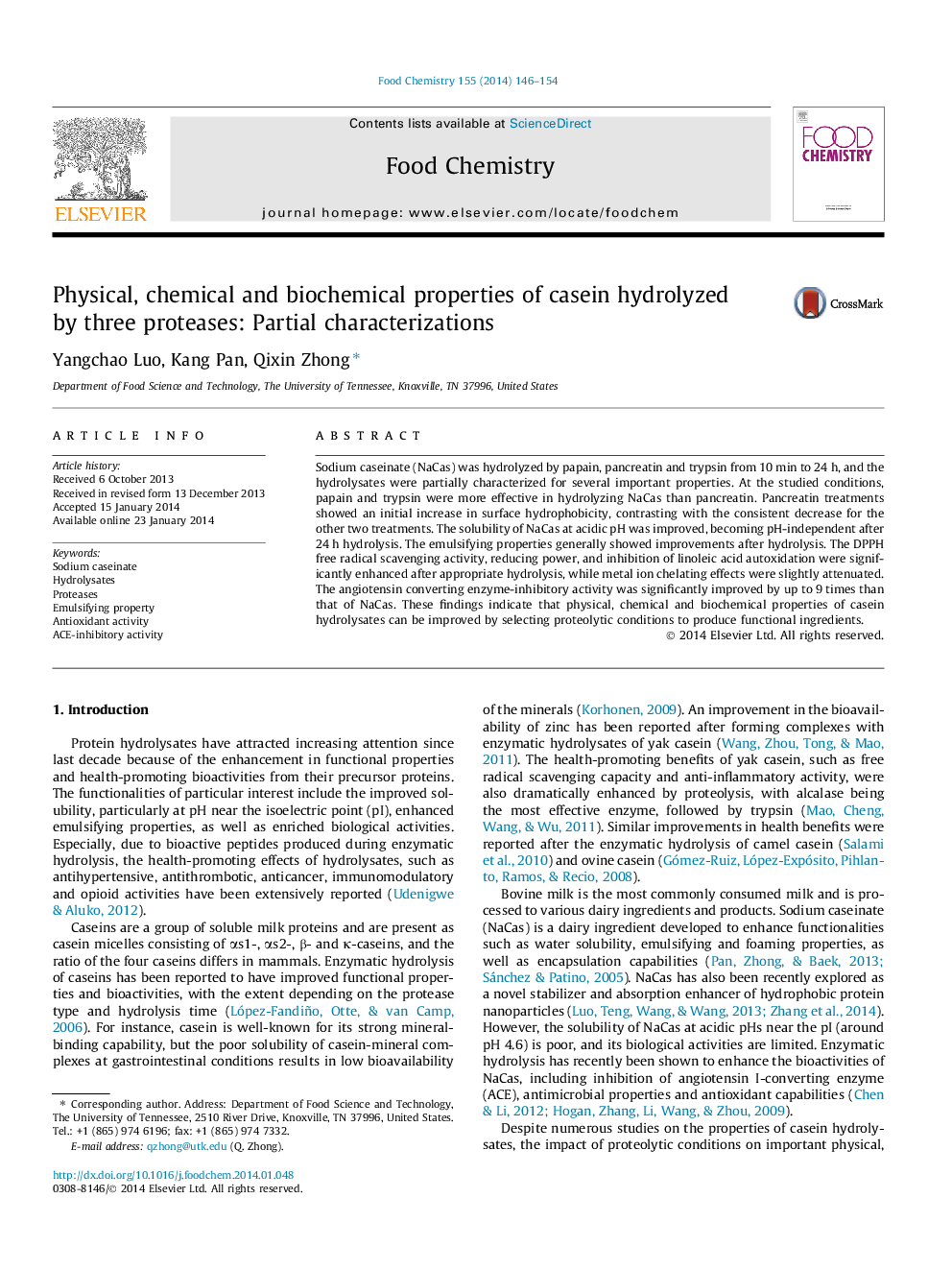| Article ID | Journal | Published Year | Pages | File Type |
|---|---|---|---|---|
| 7598176 | Food Chemistry | 2014 | 9 Pages |
Abstract
Sodium caseinate (NaCas) was hydrolyzed by papain, pancreatin and trypsin from 10Â min to 24Â h, and the hydrolysates were partially characterized for several important properties. At the studied conditions, papain and trypsin were more effective in hydrolyzing NaCas than pancreatin. Pancreatin treatments showed an initial increase in surface hydrophobicity, contrasting with the consistent decrease for the other two treatments. The solubility of NaCas at acidic pH was improved, becoming pH-independent after 24Â h hydrolysis. The emulsifying properties generally showed improvements after hydrolysis. The DPPH free radical scavenging activity, reducing power, and inhibition of linoleic acid autoxidation were significantly enhanced after appropriate hydrolysis, while metal ion chelating effects were slightly attenuated. The angiotensin converting enzyme-inhibitory activity was significantly improved by up to 9Â times than that of NaCas. These findings indicate that physical, chemical and biochemical properties of casein hydrolysates can be improved by selecting proteolytic conditions to produce functional ingredients.
Keywords
Related Topics
Physical Sciences and Engineering
Chemistry
Analytical Chemistry
Authors
Yangchao Luo, Kang Pan, Qixin Zhong,
